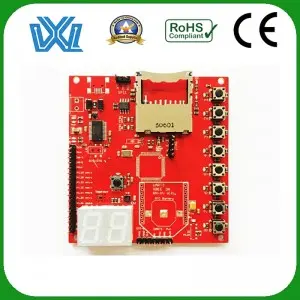In electronics, designing a printed circuit board (PCB) is a critical step in ensuring correct functionality and optimal performance. OrCAD is a popular electronic design automation (EDA) software that provides a powerful set of tools to assist engineers in seamlessly converting schematics to PCB layouts. In this article, we’ll explore a step-by-step guide on how to convert a schematic to a PCB layout using OrCAD.
Step 1: Create a new project
Before delving into PCB layout, it is necessary to set up a new project in OrCAD to effectively organize your design files. First start OrCAD and choose New Project from the menu. Choose a project name and a location on your computer, then click OK to continue.
Step 2: Import the Schematic
The next step is to import the schematic into OrCAD software. To do this, go to the “File” menu and select “Import.” Select the appropriate schematic file format (eg, .dsn, .sch) and navigate to the location where the schematic file is saved. Once selected, click Import to load the schematic into OrCAD.
Step 3: Verify Design
Ensuring the accuracy and functionality of the schematic is critical before proceeding with PCB layout. Use OrCAD’s built-in tools such as Design Rule Checking (DRC) to detect any potential errors or inconsistencies in your design. Addressing these issues at this stage will save time and effort during the PCB layout process.
Step 4: Create the PCB Board Outline
Now that the schematic has been verified, the next step is to create the actual PCB board outline. In OrCAD, navigate to the Placement menu and select Board Outline. Use this tool to define the shape and size of your PCB according to your requirements. Ensure that the board outline complies with specific design constraints and mechanical constraints (if any).
Step 5: Placing Components
The next stage involves placing the components onto the PCB layout. Use OrCAD’s component placement tools to drag and drop the necessary components from the library onto the PCB. Make sure to place components in a way that optimizes signal flow, minimizes noise, and follows DRC guidelines. Pay attention to component orientation, especially polarizing components.
Step 6: Routing Connections
After placing the components, the next step is to route the connections between them. OrCAD provides powerful routing tools to help efficiently route wires to make electrical connections. Keep in mind factors such as signal integrity, length matching, and avoiding crossovers when routing. OrCAD’s autorouting feature further simplifies this process, although manual routing is recommended for more complex designs.
Step 7: Design Rule Check (DRC)
Before finalizing the PCB layout, it is critical to perform design rule checking (DRC) to ensure compliance with manufacturing constraints. OrCAD’s DRC feature automatically detects errors related to spacing, clearance, solder mask, and other design rules. Correct any issues flagged by the DRC tool to ensure the PCB design is manufacturable.
Step 8: Generate Manufacturing Files
Once the PCB layout is error-free, the fabrication files required for PCB fabrication can be generated. OrCAD provides an easy way to generate industry standard Gerber files, Bill of Materials (BOM) and other required output. Generated files are validated and shared with manufacturers to continue PCB fabrication.
Converting schematics to PCB layouts using OrCAD involves a systematic process that ensures design accuracy, functionality, and manufacturability. By following this comprehensive step-by-step guide, engineers and hobbyists can effectively harness the power of OrCAD to bring their electronic designs to life. Mastering the art of converting a schematic to a PCB layout will undoubtedly enhance your ability to create functional and optimized electronic designs.
Post time: Aug-04-2023

